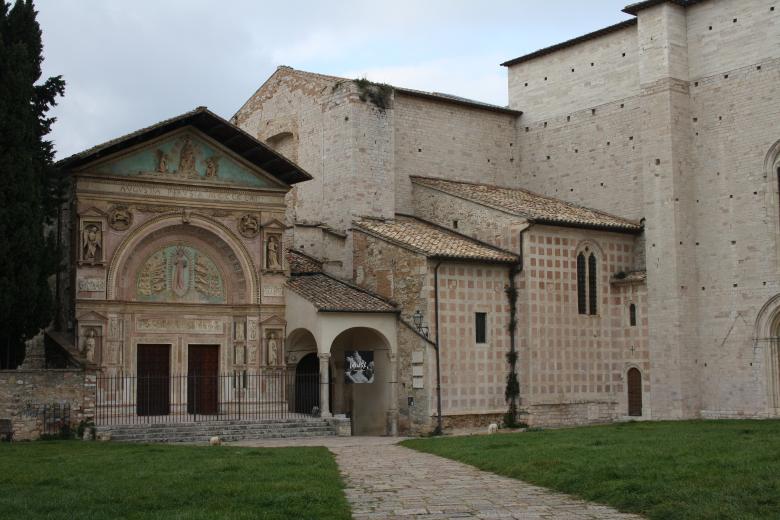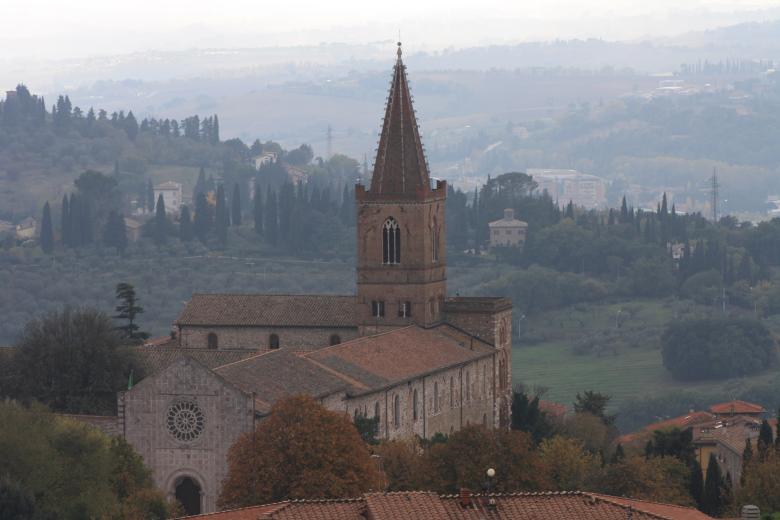Severo in the square, by putting in front of it a porch with irregular arches. In 1353 the palace reached the current via dei Priori. In the following century it was further extended and, bypassing via dei Priori with an arch, also encompassed a medieval tower. A further extension was executed between 1429 and 1443.
If you climb the stairway from the piazza, then bypass the ogival portal, surmounted by two copies of the 1200 bronze Griffon and Lion, symbols of the city (the originals are preserved inside the Palace), you can enter into the Notari Hall. Originally hall of the popular assemblies, the rectangular space, with a vault supported by eight Romanesque arches, is entirely decorated with frescoes depicting legends, tales and biblical stories dating back to the last decade of 1200, maybe artwork of the Master of Farneto and of the Expressionist Master of St. Claire, beyond that with emblems of podestà and Captains of the People who ruled the town.
The façade on the main street presents, beyond the series of three-light and four-light windows, that lighten the horizontal sense of the wall mass, a richly carved portal, dating from the 14th century, flanked with pillars supported by lions: the allegories of Magnanimity, Fertility and Pride are depicted on the left pillar. On the right pillar are Avarice, Abundance and Humility. The pillars are surmounted by two griffons subduing some calves, symbol of the art of butchers, who commissioned the artwork, whereas in the arch there are scenes of the lfe of man.
In the bezel there are copies (the originals are in the Umbria National Gallery) of statues depicting St. Ludovico from Tolosa, St. Lawrence and St. Ercolano. On the first floor of the Palace, seat of the municipal administration, there are different mural paintings including those worthy of note of Bernardino Pinturicchio in the Council Room. On the third floor, seat of the Umbrian National Gallery, there is the Priori Chapel, frescoed by Benedetto Bonfigli with Stories of the Life of St. Ludovico from Tolosa and St. Ercolano (1454-1480).
In the same building, along corso Vannucci, are the College of Cambio, seat of the exchange corporation, preserving precious frescoes executed among 1498 and 1500 by Pietro Vannucci, called Perugino, one of the highest examples of the Italian Renaissance Art, and the College of Mercanzia, that is of merchants, with elegant fittings in carved walnut and poplar probably made by artists from beyond the Alps.



































